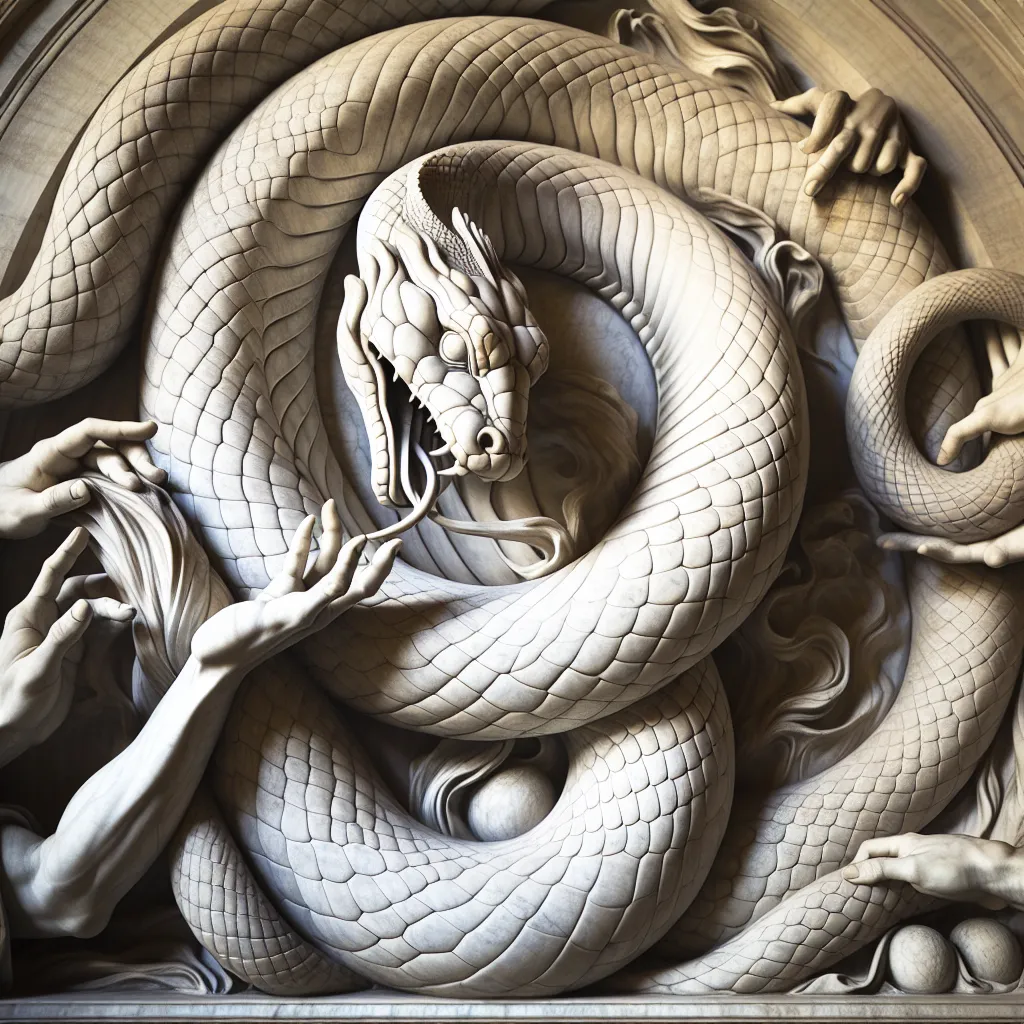
- Published on
- Authors

- Name
- You
The World Serpent: Jormungandr and Its Symbolism
In the rich tapestry of Norse mythology, few creatures are as awe-inspiring or as significant as Jormungandr, the World Serpent. This colossal sea serpent, born to the trickster god Loki and the giantess Angrboda, is often depicted encircling the world, its tail firmly grasped in its mouth. This article delves into the myth of Jormungandr, exploring its symbolic meanings and crucial role in Norse cosmology and the events of Ragnarok.
Origins and Mythos
Birth and Growth
Jormungandr is one of the three monstrous offspring of Loki, alongside Fenrir the wolf and Hel, the ruler of the underworld. According to the Prose Edda, Odin threw Jormungandr into the ocean that surrounds Midgard. The serpent grew so large that it eventually encircled the Earth, earning the name “World Serpent” or “Midgard Serpent.”
Role in Norse Cosmology
Jormungandr's existence is profoundly symbolic within Norse cosmology:
| Symbolism | Meaning |
|---|---|
| Circle of Life and Death | The serpent biting its own tail is reminiscent of the ancient ouroboros, symbolizing the cyclical nature of life and death. |
| Balance of Forces | Jormungandr’s presence around Midgard represents the fragile balance between order and chaos. |
| Imminent Destruction and Renewal | The serpent is a harbinger of Ragnarok, embodying the concept that destruction is a precursor to renewal. |
Jormungandr in Ragnarok
Prophecy and Occurrence
One of the most significant aspects of Jormungandr’s myth is its role in Ragnarok, the prophesized end of the world. During Ragnarok, Jormungandr will release its tail, unleashing chaos. The serpent will rise from the ocean, poisoning the skies with its venom. It is foretold that Thor, the god of thunder, will confront Jormungandr, and the battle between them will be cataclysmic.
- Thor vs. Jormungandr: In their final battle, Thor will eventually slay Jormungandr but will succumb to the serpent's venom after taking nine steps.
Symbolic Interpretation
This confrontation is rich with symbolic meaning:
| Aspect | Symbolic Meaning |
|---|---|
| End of an Era | Jormungandr's release signifies the end of the current world order. |
| Thor's Sacrifice | Thor’s demise underscores the inevitability of change and the cost of striving to preserve order. |
| Cataclysm and Renewal | Ragnarok is both an ending and a beginning, symbolizing the cyclical nature of time in Norse belief. |
Jormungandr in Symbolic and Modern Contexts
Historical and Cultural Influence
The image of Jormungandr has permeated various cultures and historical contexts. The ouroboros, an ancient symbol depicting a serpent or dragon eating its own tail, has roots in many mythologies and represents infinity and the cyclical nature of the universe.
Modern Relevance
In modern times, Jormungandr serves as a powerful metaphor within literature, psychology, and philosophy. The serpent is often interpreted as a symbol of:
- Eternal Return: The concept that history repeats itself in cycles.
- Human Psyche: In Jungian psychology, the ouroboros represents the unconscious mind and the process of individuation.
Conclusion
The myth of Jormungandr is a profound and multifaceted one, imbued with deep symbolic meanings that traverse the boundaries between mythology, cultural history, and modern philosophical thought. As the World Serpent, Jormungandr represents the eternal cycle of destruction and renewal, the delicate balance of cosmic forces, and the inevitable changes that shape the fabric of existence.
In the enigmatic figure of Jormungandr, we find reflections of our own world's perpetual transformations and a timeless reminder of the interconnectedness of all things. Whether seen as a harbinger of doom or a symbol of eternal continuity, the World Serpent remains a powerful and enduring icon in the rich legacy of Norse mythology.
